Home | Military and Sport | Military Teams
The Tea Bowl and the 1944 Grey Cup Champions - St. Hyacinthe-Donnaconas
PreviousNext
Sport's ability to transcend real-life and offer glimpses of a brighter future, even at the most adverse of times, was never better exemplified than in the 1944 "Tea Bowl". That is, not the 'Grey Cup' or the 'Super Bowl', but the quintessentially English "Tea Bowl".
During the merciless German bombing campaign of London in the Second World War, a new classless, democratic and forward-looking attitude among Londoners developed. They simply refused to be beaten and this new attitude was so impressive that it spread among the visiting soldiers from Canada who were determined to help defeat the intimidating enemy. While patiently waiting to learn of the secret preparations that were underfoot for a European invasion and push to Berlin, Canadian soldiers trained and drilled over and over --, the waiting was interminable and boring.
Sport was an obvious and welcome distraction for both a military and civilian community at boiling point of tension and anxiety, for sport offered chances for hope and solidarity that was mirrored in soldiers and people alike. Respecting the English hosts, a one-off gridiron game was organized between Canadian and American forces - the "Tea Bowl". With a 6-week preparation, a squadron of Spitfires on guard, an audience of over 32,000 confused spectators who all had to be given an abridged copy of the rules of the game, (and who more importantly had flouted the obvious danger of convening in one place), the Canadian 'Mustangs' - as they called themselves, defeated the Americans, winning 16-6. This occasion was so memorable for the competing and watching Canadian soldiers that days later they could be seen wandering the streets of London in uniform yelling "we're no. 1!"
Although most high-profile sports were cancelled during the war because of the sheer size of the conflict, the Canadian military felt that continuing with the Grey Cup would help boost morale. Military football teams had been organized throughout the bases across Canada. By 1944, it seemed like the war would go on forever and it was in this interminable climate that it was decided not to hold an East versus West Grey Cup. This competition meant the completely unfancied St. Hyacinthe-Donnacona Navy team who had started as a 'pick-up' team, or more accurately as a bunch of sailors who liked to mess around on a football field, were to take on the vastly superior, slick and well-polished air force team, the Hamilton Flying Wildcats.
The Flying Wildcats had won the Grey Cup in 1943 and were perennial football champions because they were a much more settled team. Clearly they would have no problem defeating a pick up team with no notable offence. In fact so unlikely was anything other than a Hamilton win that less than 4,000 spectators attended the game. However, what was not recognized was how good the Donnacona defence was and the Wildcats were unable to register any points in the last three quarters of the game. Then with the scores tied late in the game, St. Hyacinthe converted a winning single kick - a real David v. Goliath moment of the like that only sport can offer.
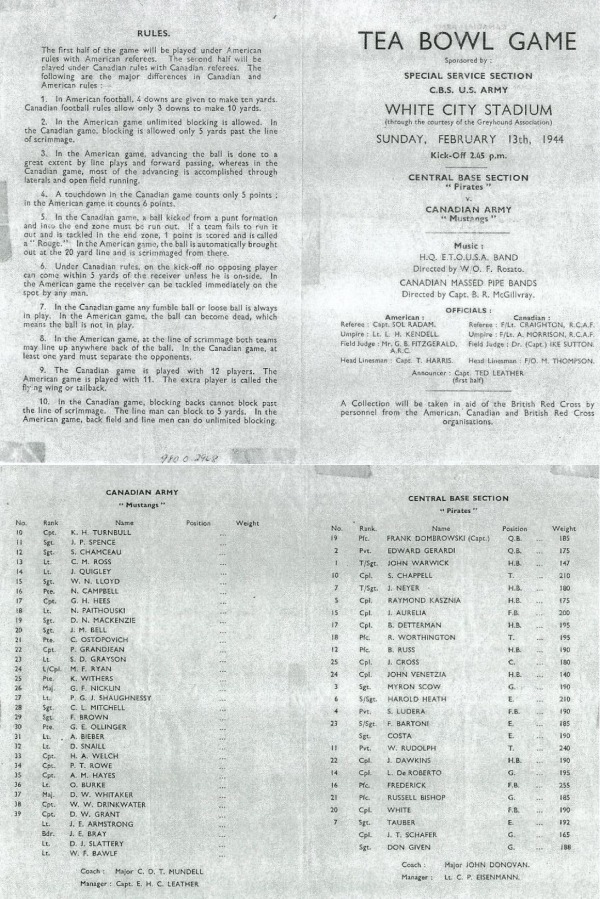
The Tea Bowl was played on Feb. 13, 1944 at the White City Stadium in London, England. The Canadian Mustangs fielded a team that included many former CFL Players such as Major Jeff Nicklin of the Winnipeg Blue Bombers, Major Denis Whitaker of the Hamilton Flying Wildcats and Captain Paul "Pappy" Rowe of the Calgary Broncs. The game was played using both the Canadian and American rules.
Collection: The Canadian War Museum (Accession Number 19730104-055 front and back), George Metcalf Archival Collection
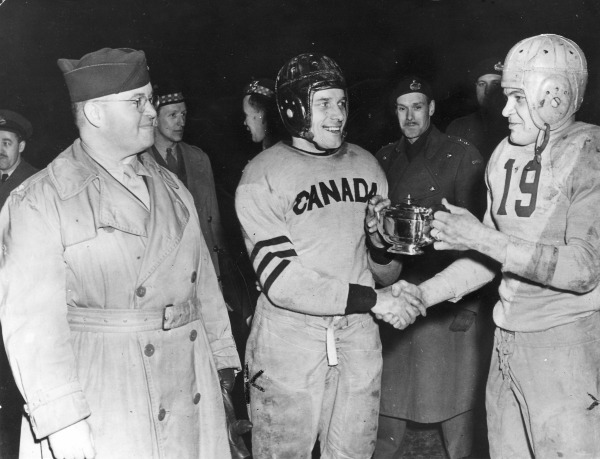
The first of two 'Bowls' pitting Canadian and American servicemen was the Tea Bowl. The trophy was a specially commissioned sterling silver tea-pot. The second match was appropriately the Coffee Bowl. Meant to create morale among the troops it also brought a moment of relief from the War to the London audience who attended.
Collection: Royal Hamilton Light Infantry Museum

The Canadian team wore orange jerseys with a simple Canada on them. Jeff Nicklin, a former linebacker for the Blue Bombers, scored the final touchdown in the Tea Bowl. He was a strong, competitive player who brought his leadership and discipline to his service in the army.
Collection: Royal Hamilton Light Infantry Museum
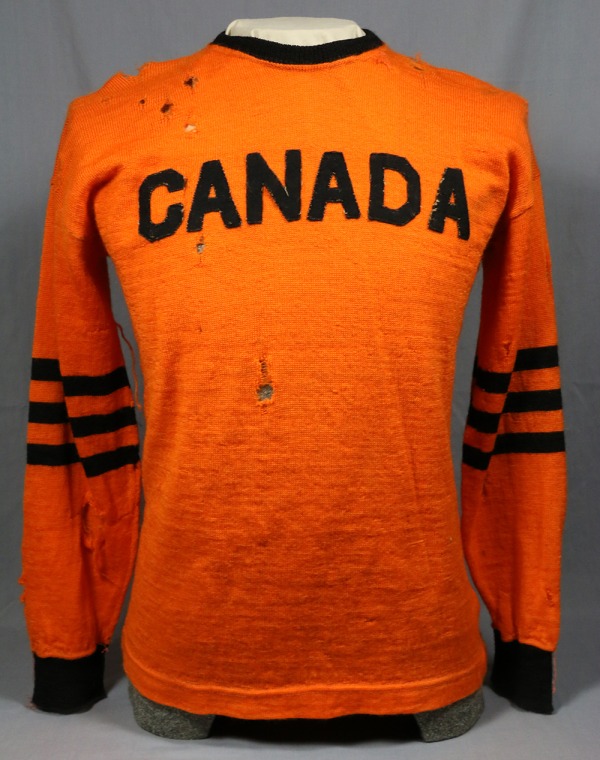
Paul 'Pappy' Rowe was known as one of the most physical fullbacks in the Canadian game. He joined the army in 1940 and served overseas during World War Two. He played in the Tea Bowl game. After the War he returned to Calgary, where he helped the Calgary Stampeders win their first Grey Cup in 1948. He was respected for his leadership and integrity on the field.
Collection: Canada's Sports Hall of Fame
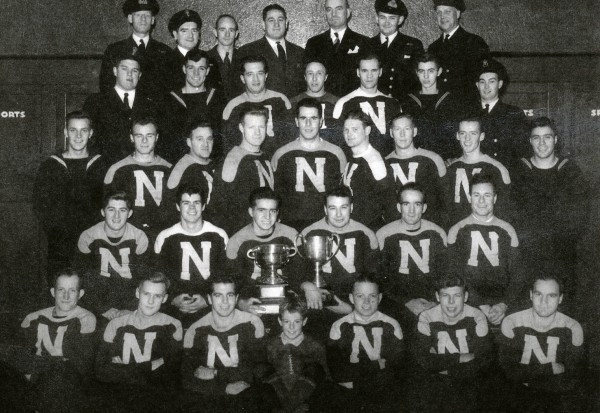
The 1944 Grey Cup football team players were selected from two shore bases. They were from different ranks, some were war veterans and some new recruits. "There wasn't one common thread except the fact that we all wore a Canadian uniform, a navy uniform".
Collection: John Crncich, The Memory Project, Historica Canada
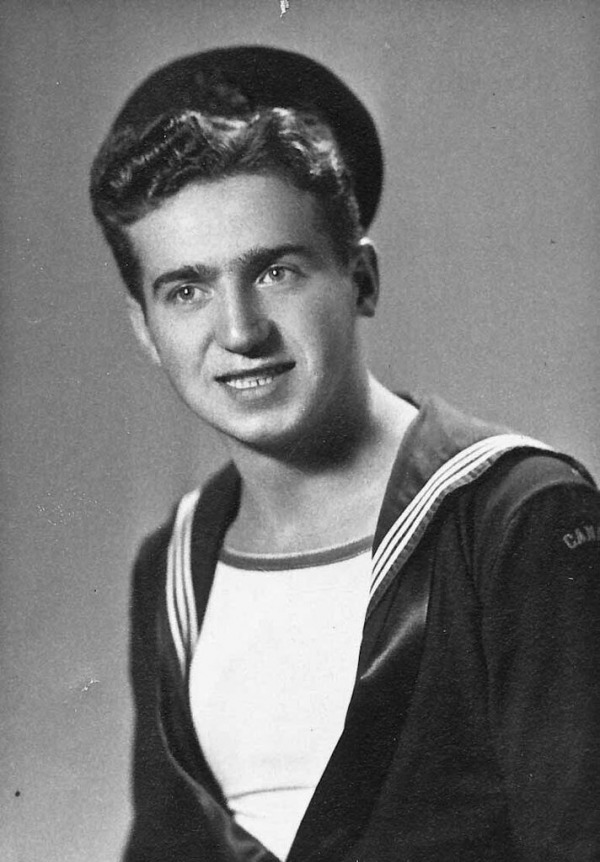
John Crncich played the "snap" or centre position. He remembers the team as being out to help everybody else and make it a unified effort. "We were glued together as a team".
Collection: John Crncich, The Memory Project, Historica Canada
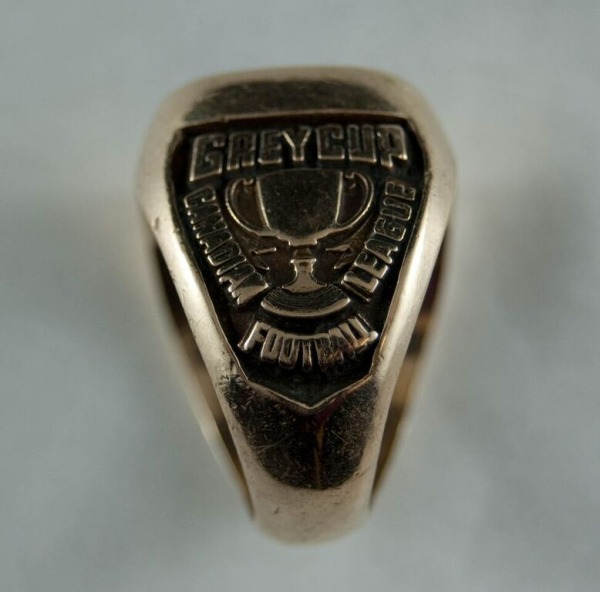
In 1994, on the 50th anniversary of their Grey Cup victory, team members were given their Grey Cup Champion ring with the RCN (Royal Canadian Navy) insignia. This is the ring given to John Crncich.
Collection: John Crncich, The Memory Project, Historica Canada
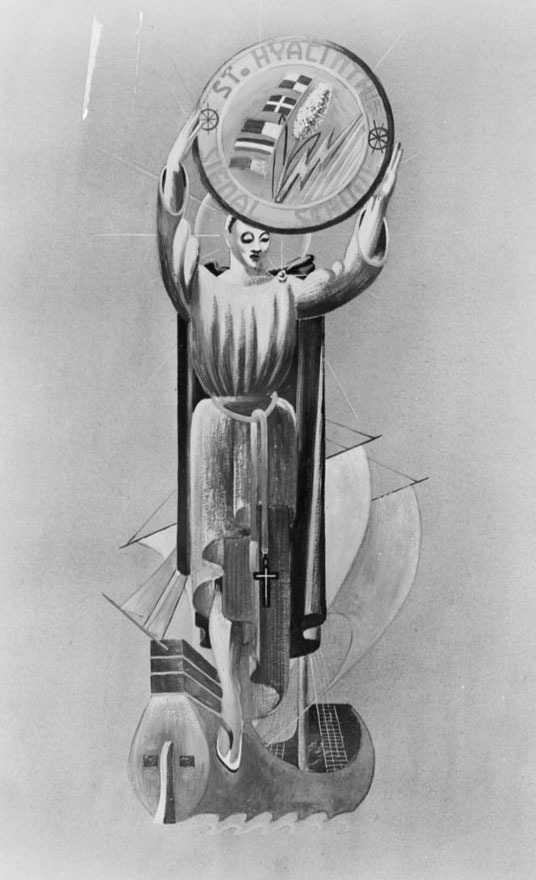
Saint Hyacinthe was a signal school where sailors were taught radar, sonar and other things. HMCS Donnacona was a Montreal ship. The resulting football team was not expected to even vie for the Grey Cup and they won a surprising victory over the Hamilton Wildcats.
Collection: Library & Archives Canada
Previous Next


